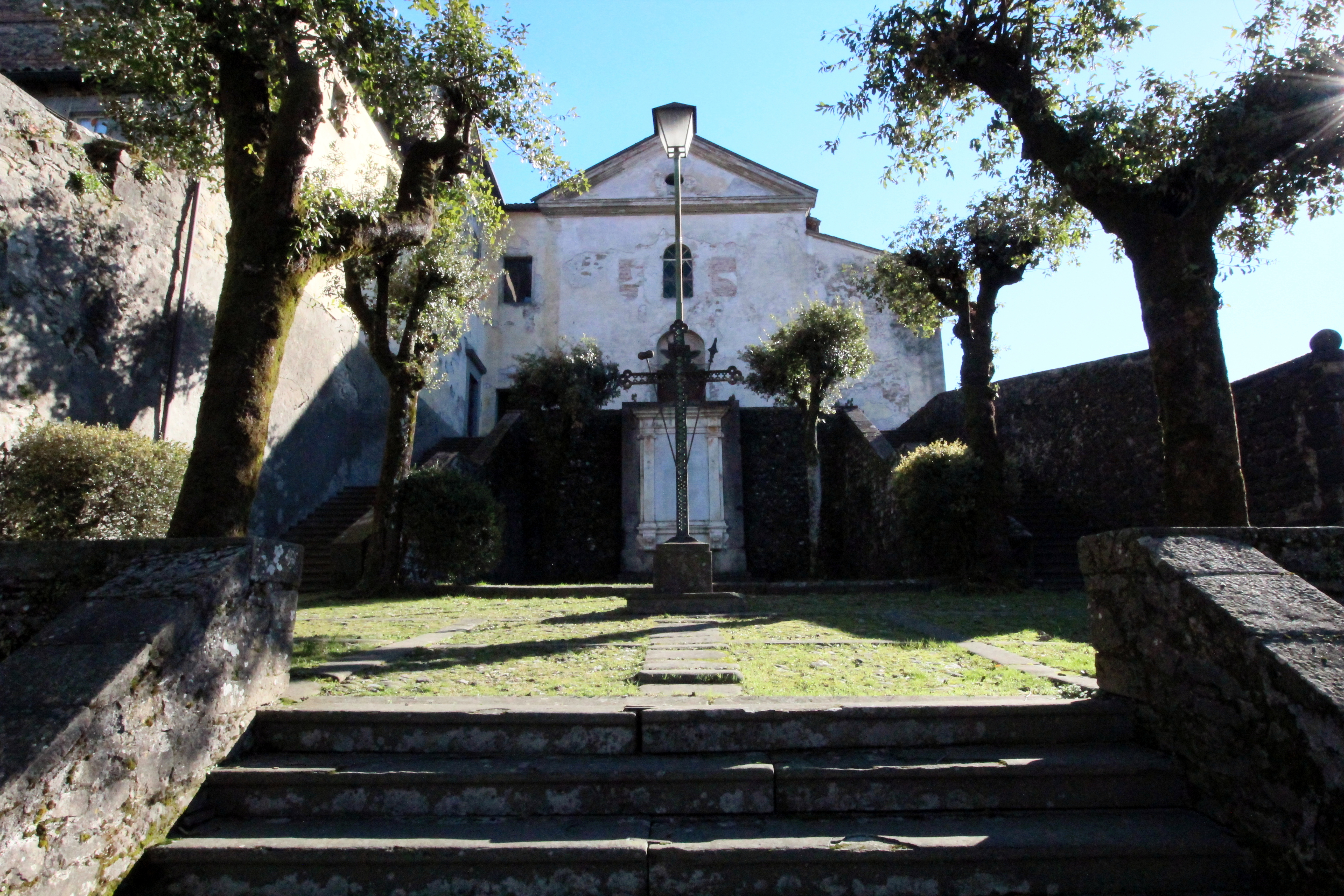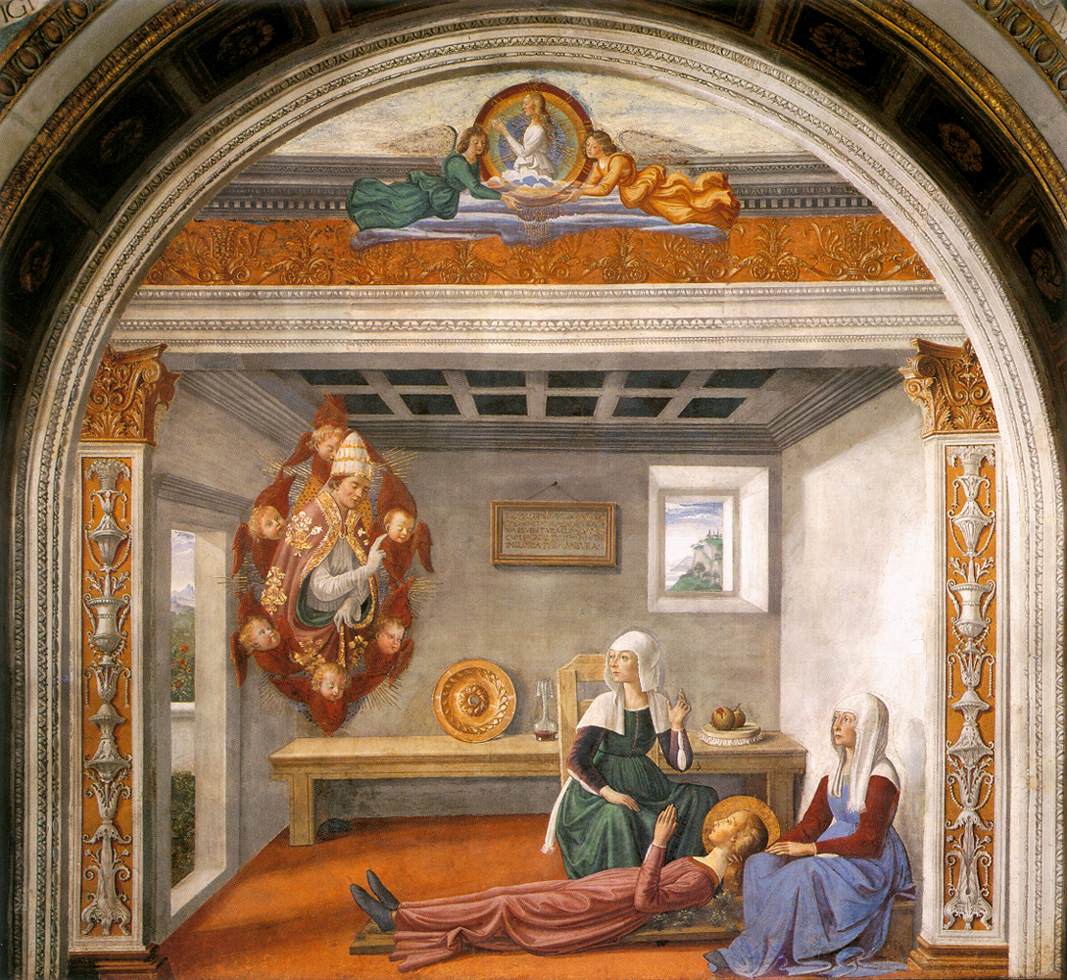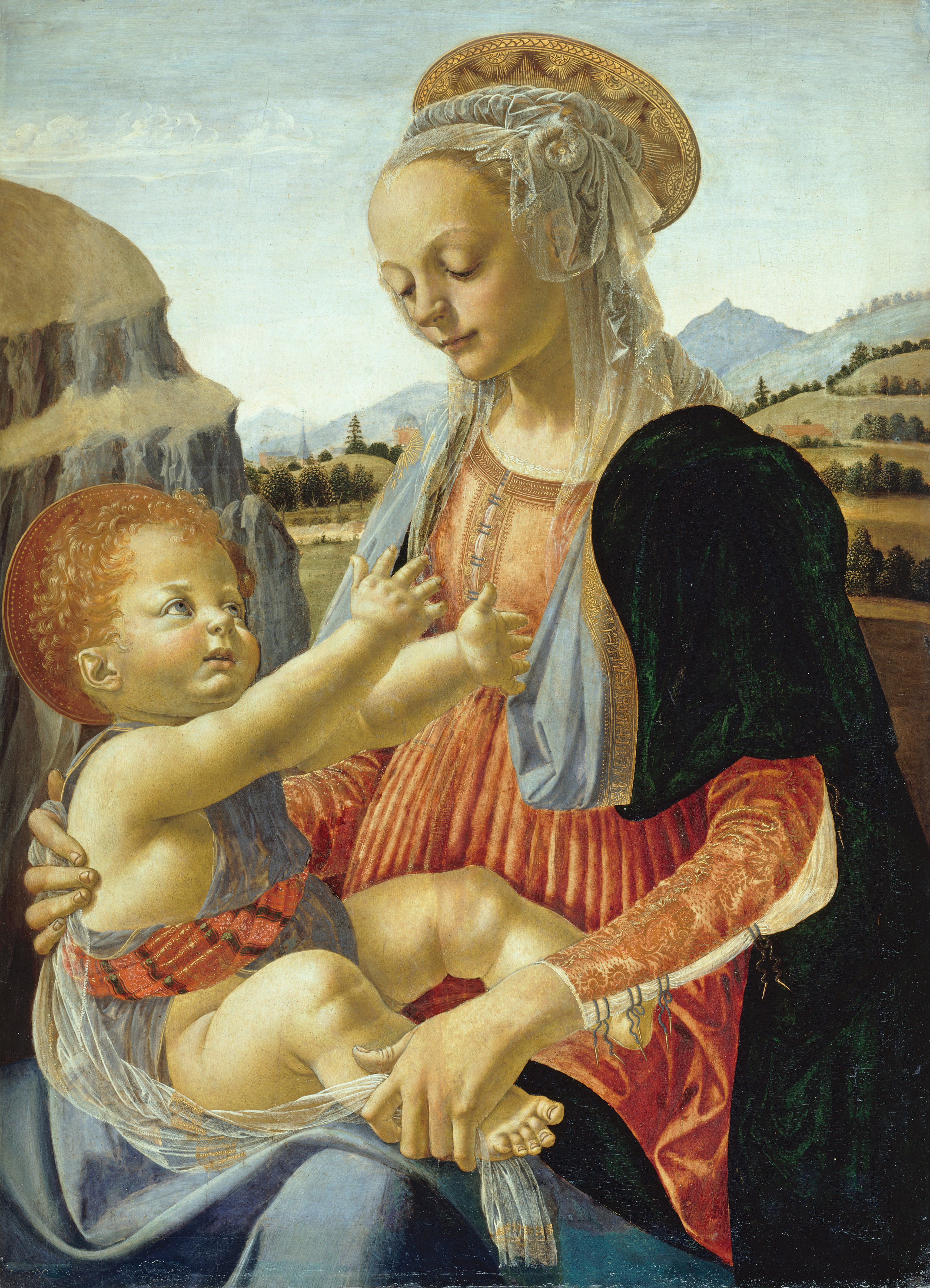|
Castelnuovo Di Garfagnana
Castelnuovo di Garfagnana is a town and (municipality) in the province of Lucca, Tuscany, central Italy. It is located in the historical region of Garfagnana, at the confluence of the Serchio and the Turrite Secca rivers, close to the intersection of roads passing through the Apennine Mountains and the Apuan Alps. The local economy is based mainly on the production of cereals and on the chemical and textile industries. History The first mention of the locality is in an official document dating back to the 8th century with the name of ''Castro Novo'' ("new fortified settlement"). From the 13th century Castelnuovo di Garfagnana developed as a market town due to its position close to rivers which were important trading routes. Later, in the 14th century, it developed under the jurisdiction of the city of Lucca. In 1316, control of Castelnuovo di Garfagnana was given to Castruccio Castracani, who built a bridge in order to join the castle to the village. At the beginning of the ... [...More Info...] [...Related Items...] OR: [Wikipedia] [Google] [Baidu] |
Tuscany
Tuscany ( ; ) is a Regions of Italy, region in central Italy with an area of about and a population of 3,660,834 inhabitants as of 2025. The capital city is Florence. Tuscany is known for its landscapes, history, artistic legacy, and its influence on high culture. It is regarded as the birthplace of the Italian Renaissance and of the foundations of the Italian language. The prestige established by the Tuscan dialect's use in literature by Dante Alighieri, Petrarch, Giovanni Boccaccio, Niccolò Machiavelli and Francesco Guicciardini led to its subsequent elaboration as the language of culture throughout Italy. It has been home to many figures influential in the history of art and science, and contains well-known museums such as the Uffizi and the Palazzo Pitti. Tuscany is also known for its wines, including Chianti, Vino Nobile di Montepulciano, Morellino di Scansano, Brunello di Montalcino and white Vernaccia di San Gimignano. Having a strong linguistic and cultural identity, ... [...More Info...] [...Related Items...] OR: [Wikipedia] [Google] [Baidu] |
Cisalpine Republic
The Cisalpine Republic (; ) was a sister republic or a client state of France in Northern Italy that existed from 1797 to 1799, with a second version until 1802. Creation After the Battle of Lodi in May 1796, Napoleon Bonaparte organized two states: one to the south of the Po, the Cispadane Republic, and one to the north, the Transpadane Republic. On 19 May 1797, Napoleon transferred the territories of the former Duchy of Modena to Transpadania and, on 12 Messidor (29 June), he decreed the birth of the Cisalpine Republic, creating a Directory for the republic and appointing its ministers. France published the constitution of the new republic on 20 Messidor (7 July), establishing the division of the territory into eleven departments: Adda ( Lodi), Alpi Apuane ( Massa), Crostolo ( Reggio), Lario ( Como), Montagna (Lecco), Olona (Milan), Panaro (Modena), Po (Cremona), Serio (Bergamo), Ticino (Pavia), and Verbano (Varese). The rest of Cispadania was merged into the Cisalpi ... [...More Info...] [...Related Items...] OR: [Wikipedia] [Google] [Baidu] |
Santi Pietro E Paolo, Castelnuovo Di Garfagnana
Santi Pietro e Paolo is the Baroque-style Roman Catholic cathedral in the center of the town of Castelnuovo di Garfagnana, region of Tuscany, Italy. History The cathedral, dedicated to Saints Peter and Paul, originally was built in the 10th century but the present structure dates to the 16th century and later refurbishments, leaving only traces of the original Romanesque structure. During World War II there was serious damage to the structure. The cathedral still houses important works at art, among them a terracotta altarpiece depicting ''San Giuseppe'' attributed to a design by the school of Andrea del Verrocchio Andrea del Verrocchio ( , , ; born Andrea di Michele di Francesco de' Cioni; – 1488) was an Italian sculpture, sculptor, List of Italian painters, painter and goldsmith who was a master of an important workshop in Florence. He apparently bec ..., a 15th-century painted ''Crucifix'' known as the Black Christ, a canvas depicting a ''Madonna and Saints'' by Miche ... [...More Info...] [...Related Items...] OR: [Wikipedia] [Google] [Baidu] |
San Giuseppe, Castelnuovo Di Garfagnana
San Giuseppe is a Baroque-style Roman Catholic Сhurch and monastery in the town of Castelnuovo di Garfagnana, region of Tuscany, Italy. History The convent was built in 1632 commissioned by Giambattista d'Este, formerly Alfonso III d'Este, Duke of Modena, who had abandoned his title to enter the Capuchin order The Order of Friars Minor Capuchin (; postnominal abbr. OFMCap) is a religious order of Franciscan friars within the Catholic Church, one of three " First Orders" that reformed from the Franciscan Friars Minor Observant (OFMObs, now OFM), the o .... He died in the convent in 1644 and his funeral monument is found inside the church. entry on church. References [...More Info...] [...Related Items...] OR: [Wikipedia] [Google] [Baidu] |
Botanical Garden
A botanical garden or botanic gardenThe terms ''botanic'' and ''botanical'' and ''garden'' or ''gardens'' are used more-or-less interchangeably, although the word ''botanic'' is generally reserved for the earlier, more traditional gardens. is a garden with a documented collection of living plants for the purpose of scientific research, conservation, display, and education. It is their mandate as a botanical garden that plants are labelled with their botanical names. It may contain specialist plant collections such as cactus, cacti and other succulent plants, herb gardens, plants from particular parts of the world, and so on; there may be greenhouse, glasshouses or shadehouses, again with special collections such as tropical plants, alpine plants, or other exotic plants that are not native to that region. Most are at least partly open to the public, and may offer guided tours, public programming such as workshops, courses, educational displays, art exhibitions, book rooms, op ... [...More Info...] [...Related Items...] OR: [Wikipedia] [Google] [Baidu] |
Parco Dell'Orecchiella
The Parco dell'Orecchiella is a park on the slopes of the Apennines in the Garfagnana region of Tuscany, central Italy, included in the townships of Piazza al Serchio, San Romano, Sillano Giuncugnano and Villa Collemandina. It is a wilderness park, protected by the State Forestry Department. The park is subdivided into three natural reserves: "l'Orecchiella", "la Pania di Corfino", and "Lama Rossa". The park includes large forests of beech, chestnut, and fir. The fauna consists of woodland species such as the Italian wolf, wild boar, deer, and mouflon. The area is also characterized by its raptors, including falcons and golden eagle The golden eagle (''Aquila chrysaetos'') is a bird of prey living in the Northern Hemisphere. It is the most widely distributed species of eagle. Like all eagles, it belongs to the family Accipitridae. They are one of the best-known bird of pr ...s. The State Forestry Department Visitors' Center at the park includes a Natural History Museum ... [...More Info...] [...Related Items...] OR: [Wikipedia] [Google] [Baidu] |
Republic Of Lucca
The Republic of Lucca () was a medieval and early modern state that was centered on the Italian city of Lucca in Tuscany, which lasted from 1160 to 1805. Its territory extended beyond the city of Lucca, reaching the surrounding countryside in the north-western part of today's Tuscany region, to the borders with Emilia-Romagna and Liguria. The Republic of Lucca remained independent until 1799. Later the state continued to exist but was, de facto, dependent upon Napoleonic France, and ceased officially its existence in 1805, when it was transformed in the Principality of Lucca and Piombino. Background Within the Imperial Kingdom of Italy, the city of Lucca had been the residence of the Margraves of Tuscany until the time of Margrave Hugh. A certain autonomy was granted by a 1084 diploma issued by Emperor Henry IV, while on his Italian campaign during the Investiture controversy with Pope Gregory VII. No feudal castle could be built in the range of 6 miles from the city wall. ... [...More Info...] [...Related Items...] OR: [Wikipedia] [Google] [Baidu] |
Order Of Friars Minor Capuchin
The Order of Friars Minor Capuchin (; postnominal abbr. OFMCap) is a religious order of Franciscan friars within the Catholic Church, one of three " First Orders" that reformed from the Franciscan Friars Minor Observant (OFMObs, now OFM), the other being the Conventuals (OFMConv). Franciscans reformed as Capuchins in 1525 with the purpose of regaining the original Habit (tunic) of St. Francis of Assisi and also for returning to a stricter observance of the rule established by Francis of Assisi in 1209. History Origins The Order arose in 1525 when Matteo da Bascio, an Observant Franciscan friar native to the Italian region of Marche, said he had been inspired by God with the idea that the manner of life led by the friars of his day was not the one which their founder, St. Francis of Assisi, had envisaged. He sought to return to the primitive way of life of solitude and penance, as practised by the founder of their Order. His religious superiors tried to suppress the ... [...More Info...] [...Related Items...] OR: [Wikipedia] [Google] [Baidu] |
Domenico Ghirlandaio
Domenico di Tommaso Curradi di Doffo Bigordi (2 June 1448 – 11 January 1494), professionally known as Domenico Ghirlandaio (also spelt as Ghirlandajo), was an Italian Renaissance painter born in Florence. Ghirlandaio was part of the so-called "third generation" of the Florentine Renaissance, along with Verrocchio, the Pollaiolo brothers and Sandro Botticelli. Ghirlandaio led a large and efficient workshop that included his brothers Davide Ghirlandaio and Benedetto Ghirlandaio, his brother-in-law Bastiano Mainardi from San Gimignano, and later his son Ridolfo Ghirlandaio. Many apprentices passed through Ghirlandaio's workshop, including Michelangelo. His particular talent lay in his ability to posit depictions of contemporary life and portraits of contemporary people within the context of religious narratives, bringing him great popularity and many large commissions.Toman, Rolf Life and works Early years Ghirlandaio was born Domenico di Tommaso di Currado di D ... [...More Info...] [...Related Items...] OR: [Wikipedia] [Google] [Baidu] |
Andrea Del Verrocchio
Andrea del Verrocchio ( , , ; born Andrea di Michele di Francesco de' Cioni; – 1488) was an Italian sculpture, sculptor, List of Italian painters, painter and goldsmith who was a master of an important workshop in Florence. He apparently became known as ''Verrocchio'' after the surname of his master, a goldsmith. Few paintings are attributed to him with certainty, but important painters were trained at his workshop. His pupils included Leonardo da Vinci, Pietro Perugino and Lorenzo di Credi. His greatest importance was as a sculptor and his last work, the Equestrian statue of Bartolomeo Colleoni in Venice, is generally accepted as his masterpiece. Life Verrocchio was born in Florence in around 1435. His father, Michele di Francesco Cioni, initially worked as a tile and brick maker, then later as a tax collector. Verrocchio never married, and had to provide financial support for some members of his family. He was at first apprenticed to a goldsmith. It has been suggested that ... [...More Info...] [...Related Items...] OR: [Wikipedia] [Google] [Baidu] |
Terracotta
Terracotta, also known as terra cotta or terra-cotta (; ; ), is a clay-based non-vitreous ceramic OED, "Terracotta""Terracotta" MFA Boston, "Cameo" database fired at relatively low temperatures. It is therefore a term used for earthenware objects of certain types, as set out below. Usage and definitions of the term vary, such as: *In art, pottery, applied art, and craft, "terracotta" is a term often used for red-coloured earthenware sculptures or functional articles such as flower pots, water and waste water pipes, and tableware. *In archaeology and art history, "terracotta" is often used to describe objects such as figurines and loom weights not made on a potter's wheel, with vessels and other objects made on a wheel from the same material referred to as earthenware; the choice of term depends on the type of object rather than the material or shaping technique. *Terracotta is also used to refer to the natural brownish-orange color of most terracotta. *In architecture, ... [...More Info...] [...Related Items...] OR: [Wikipedia] [Google] [Baidu] |
Duomo
''Duomo'' (, ) is an Italian term for a church with the features of, or having been built to serve as a cathedral, whether or not it currently plays this role. The Duomo of Monza, for example, has never been a diocesan seat and is by definition not a cathedral. In a similar way, the town of Asolo has not had its own bishop since the 10th century, but the main church (rebuilt since then) is still called the Asolo Duomo. By contradistinction, the Italian word for a cathedral '' sensu stricto'' is ''cattedrale''. There is no direct translation of "duomo" into English, leading to many such churches being erroneously called "cathedral" in English, regardless of whether the church in question hosts a bishop. Each city or town will have only one ''duomo'', unless there are different denominations involved. Locally, people usually use ''il Duomo'', the ''Duomo'', without regard to the full proper name of the church. Similar words exist in other European languages: ''Dom'' ( German ... [...More Info...] [...Related Items...] OR: [Wikipedia] [Google] [Baidu] |






